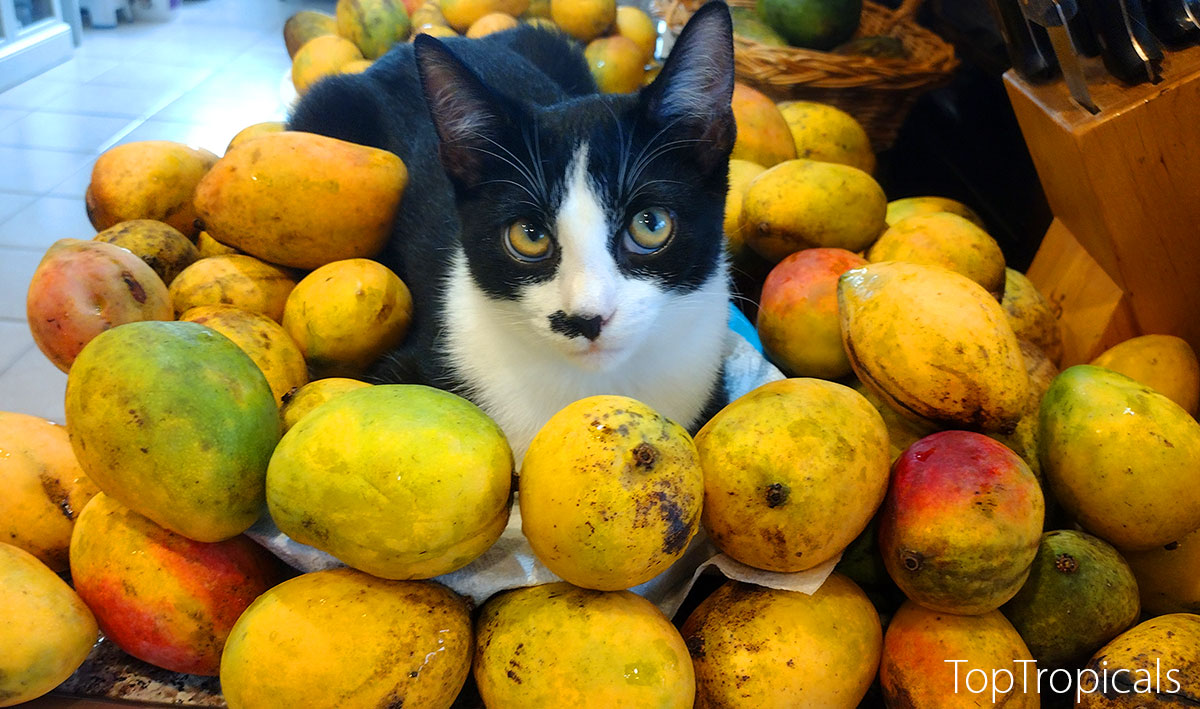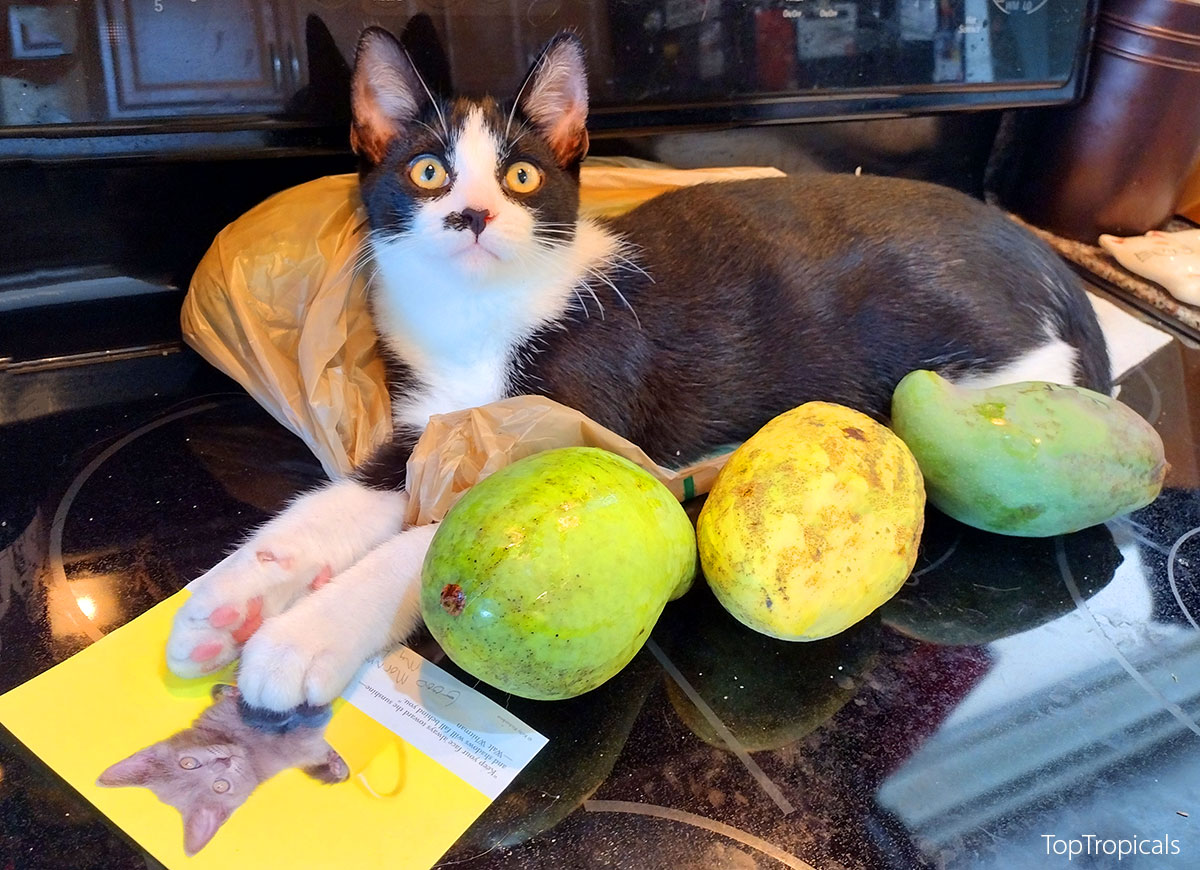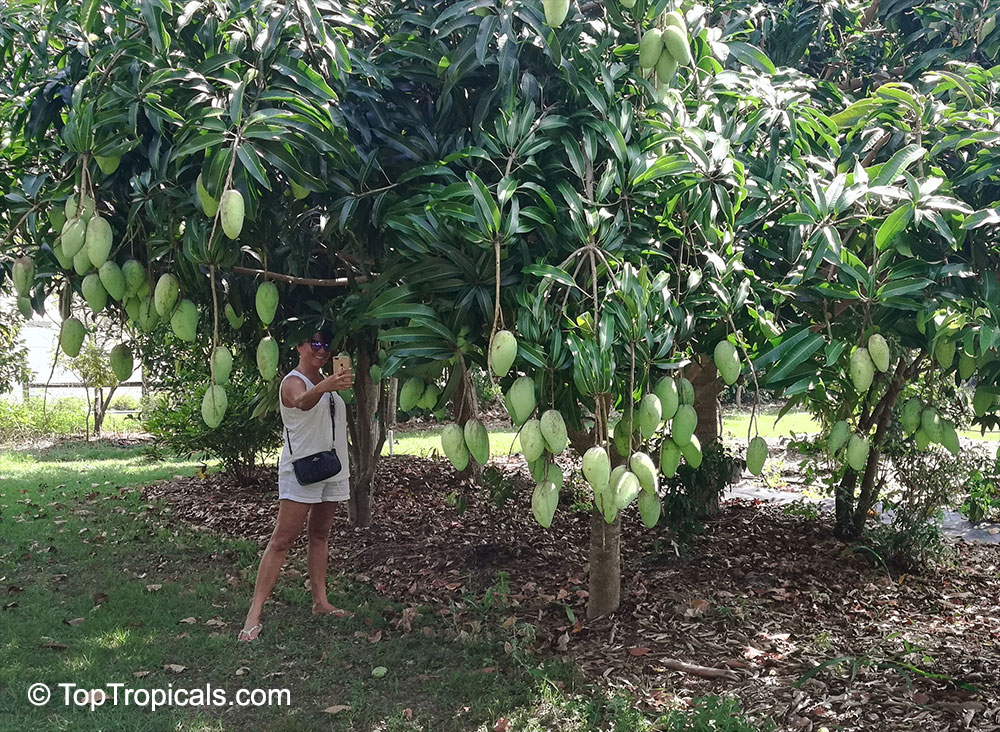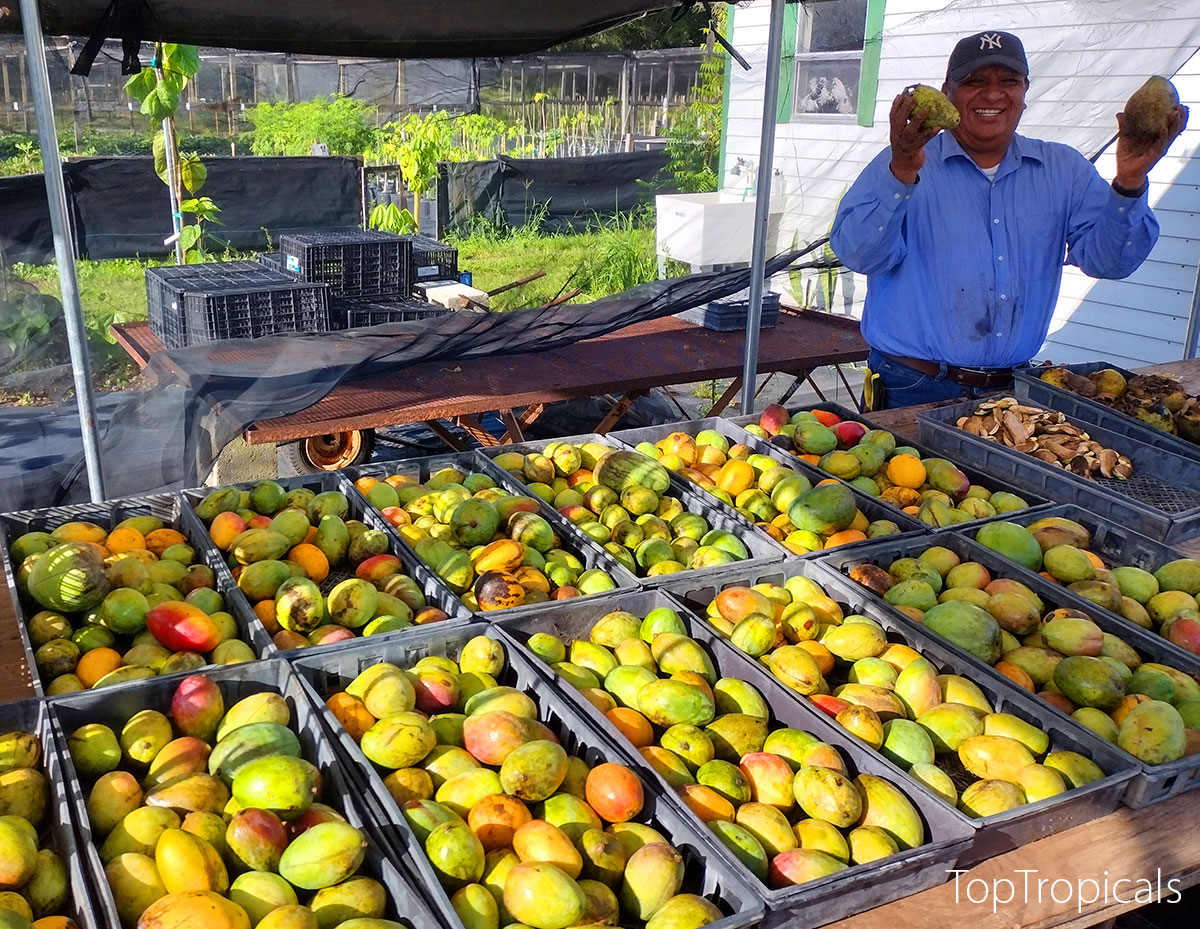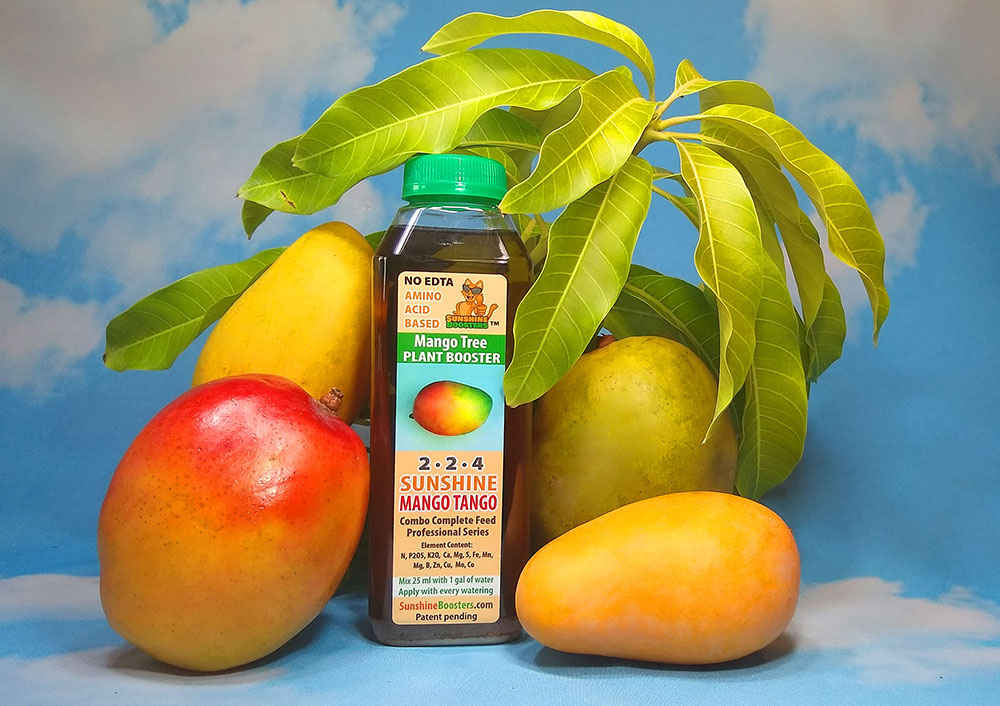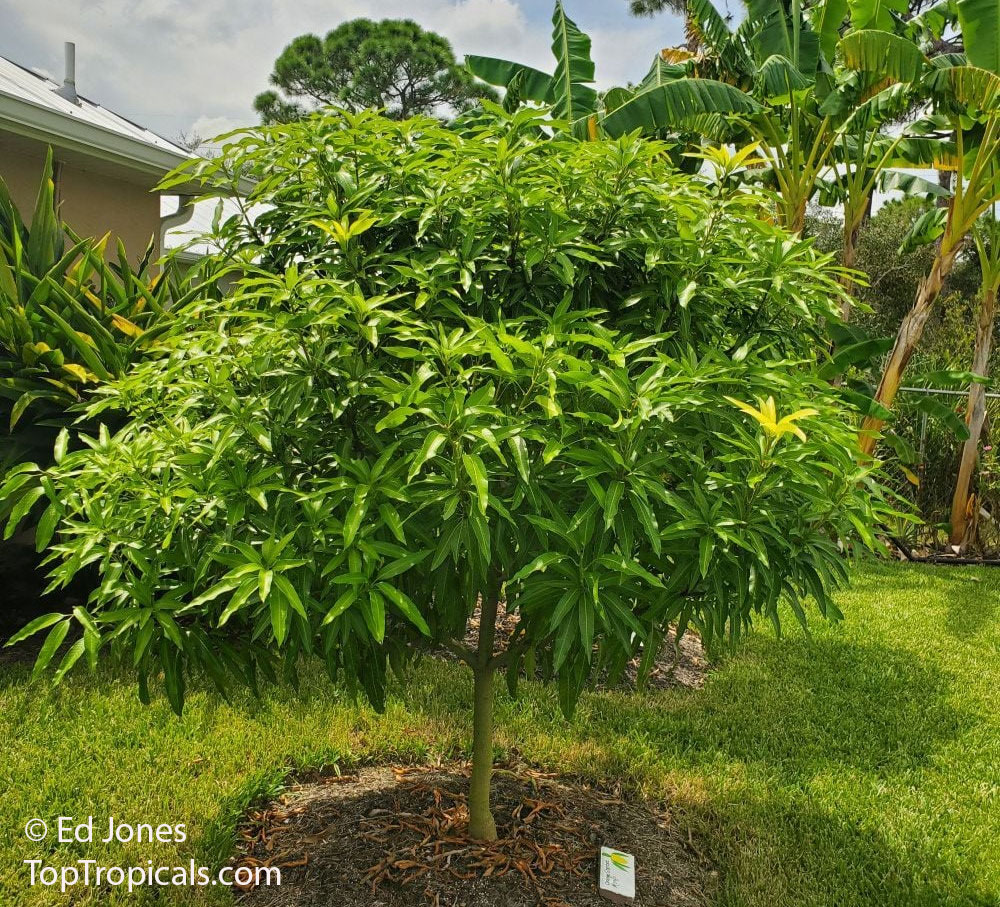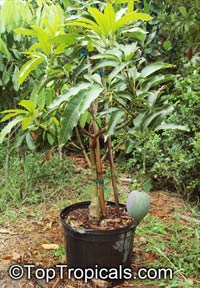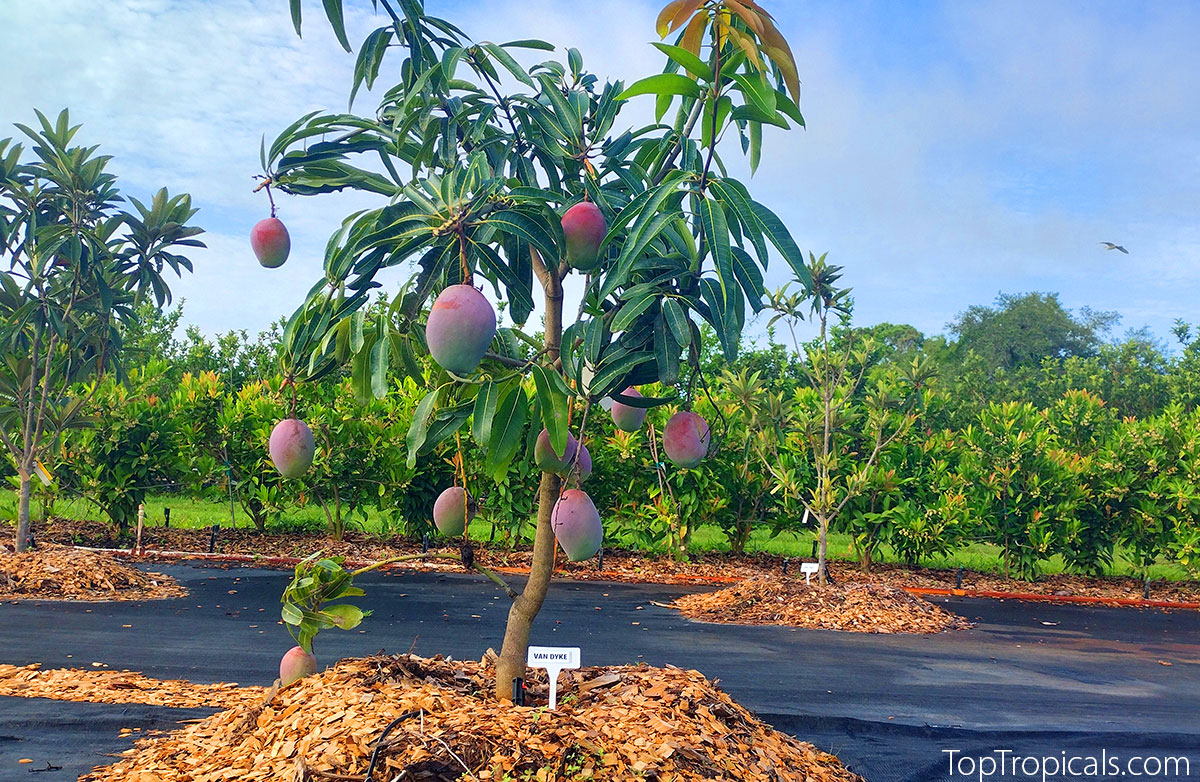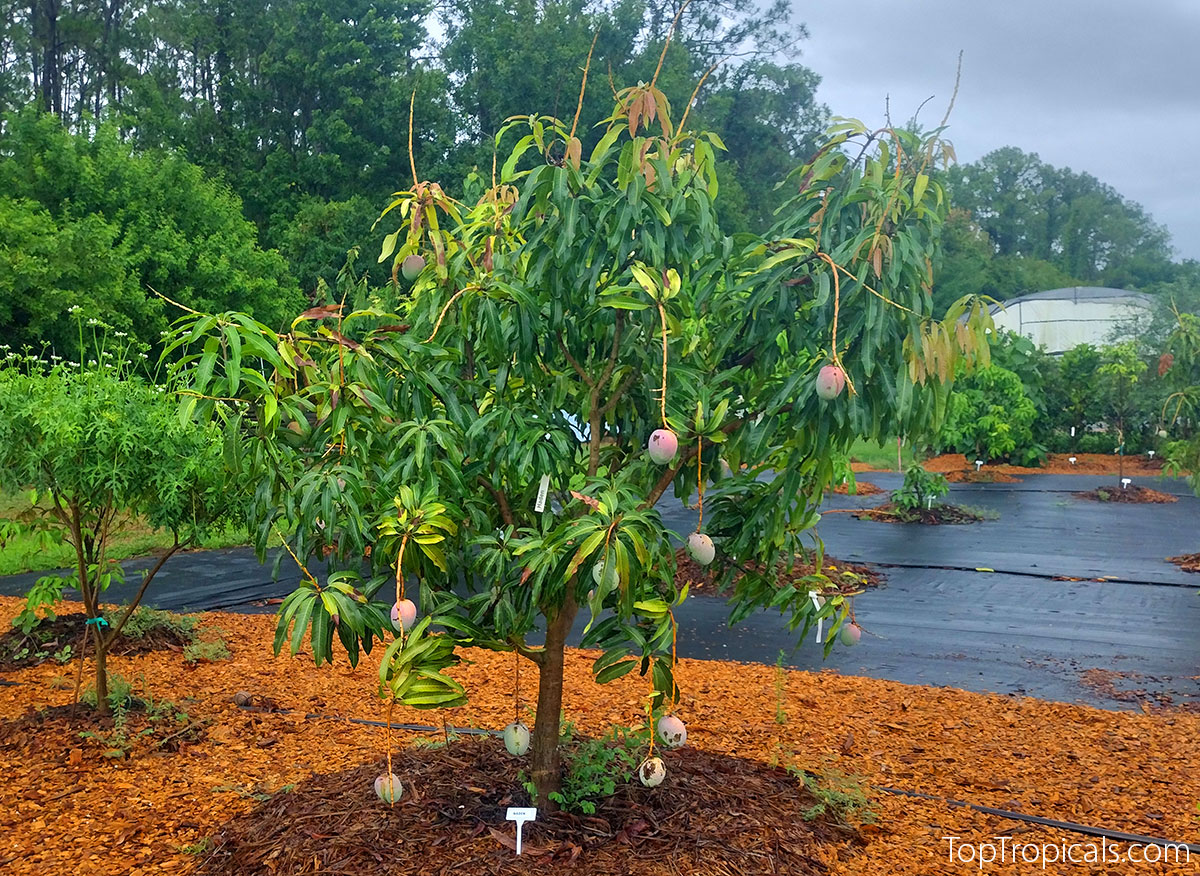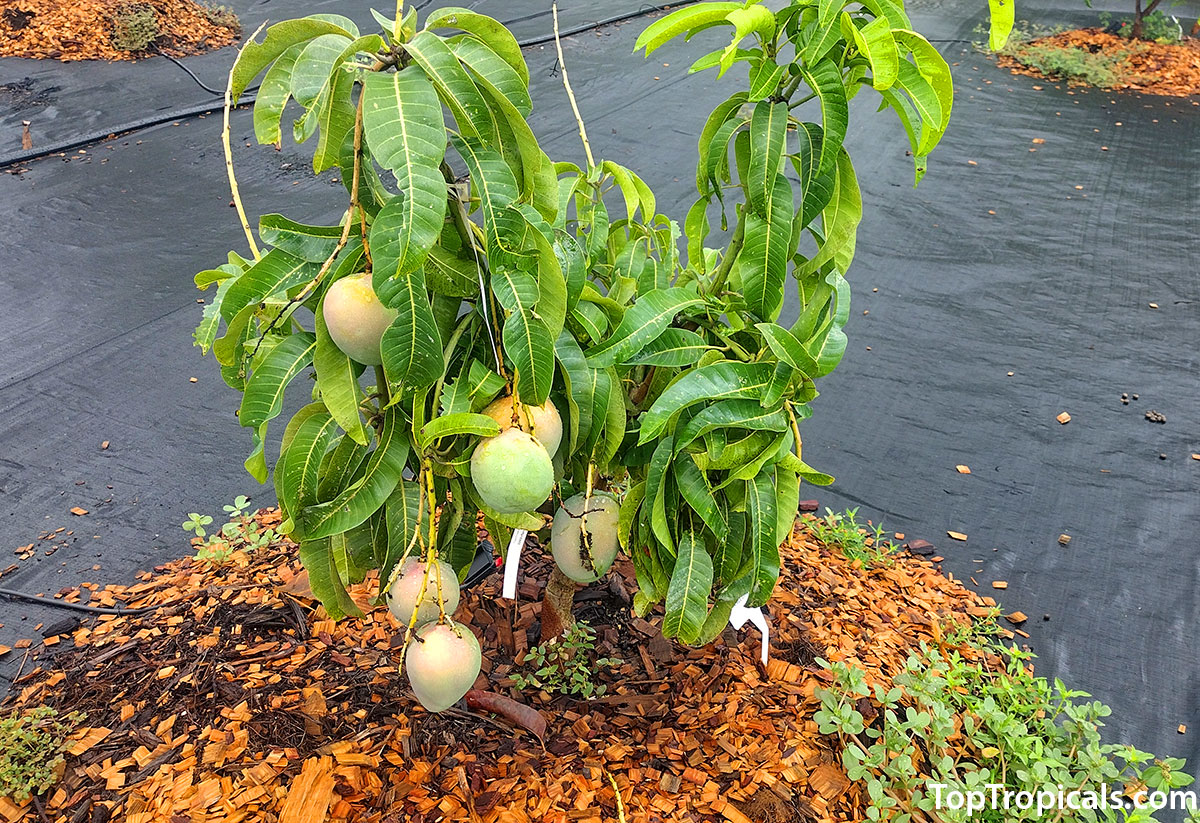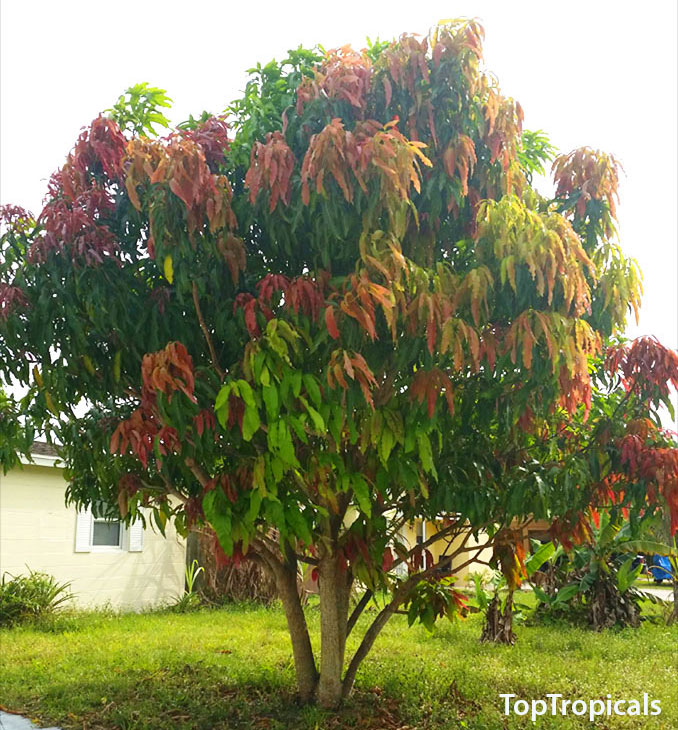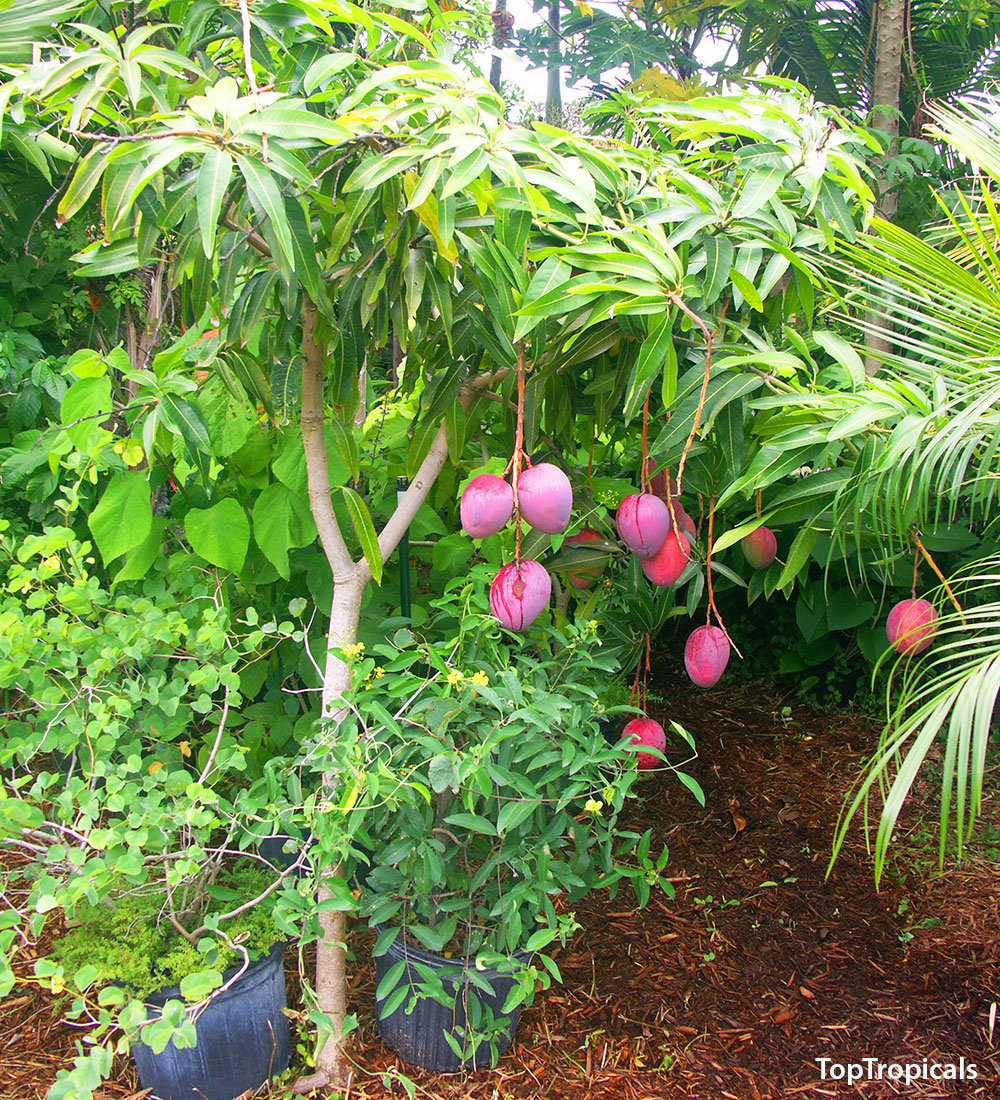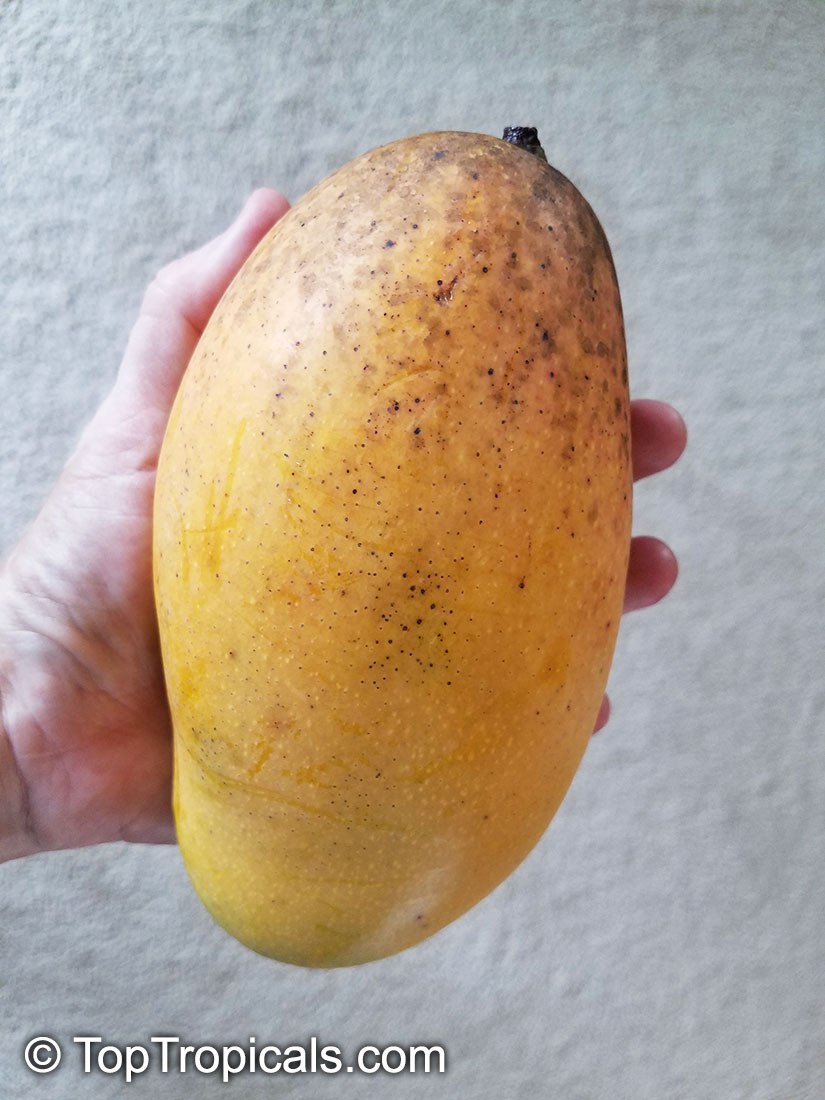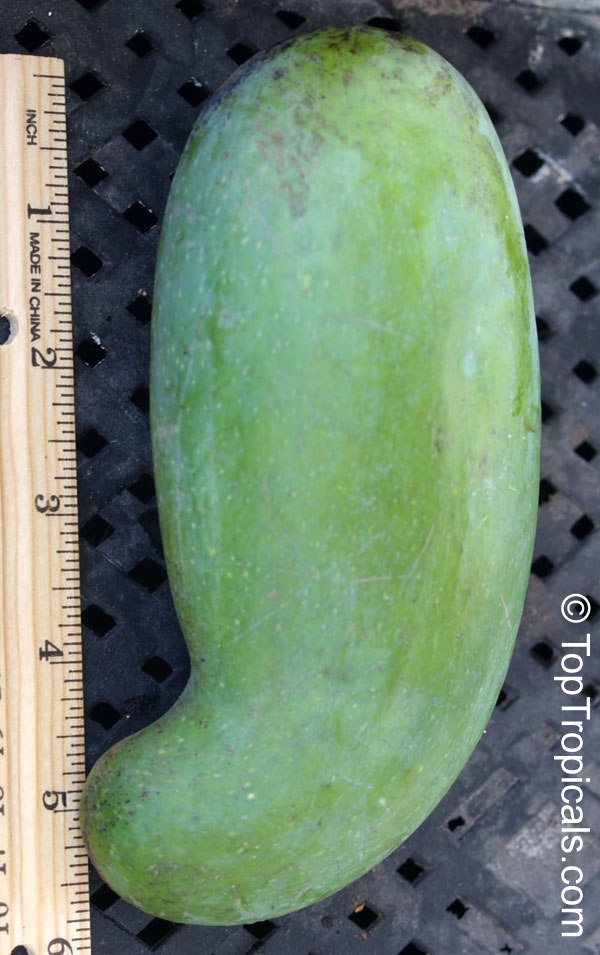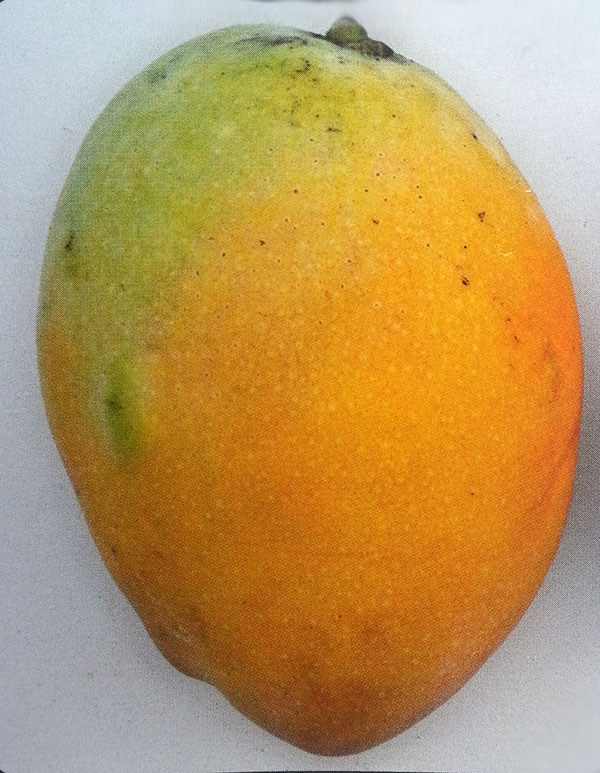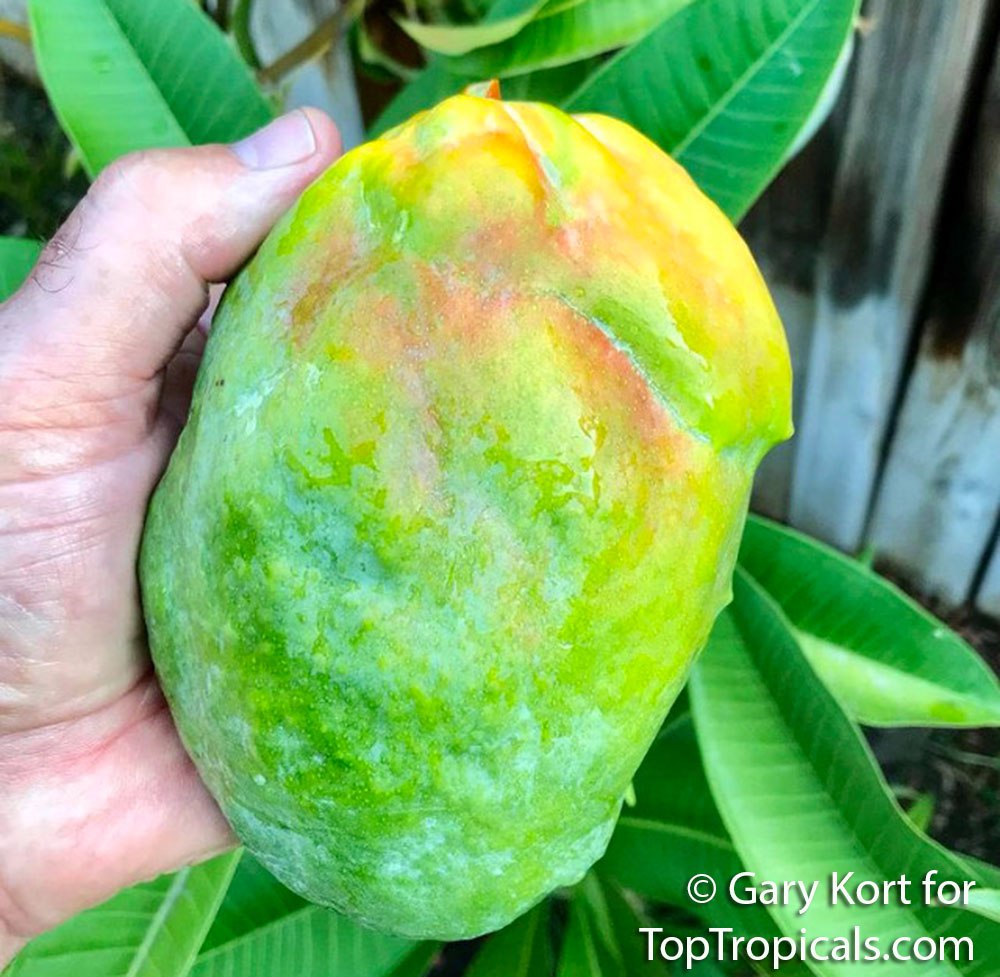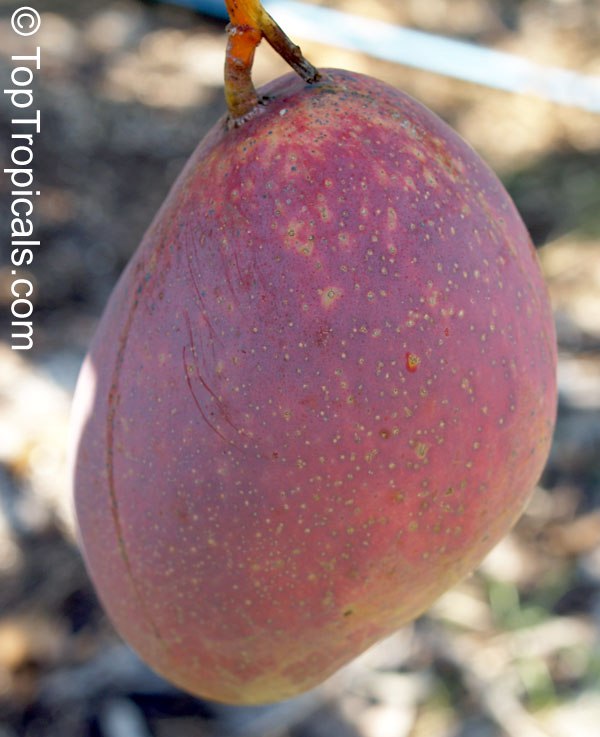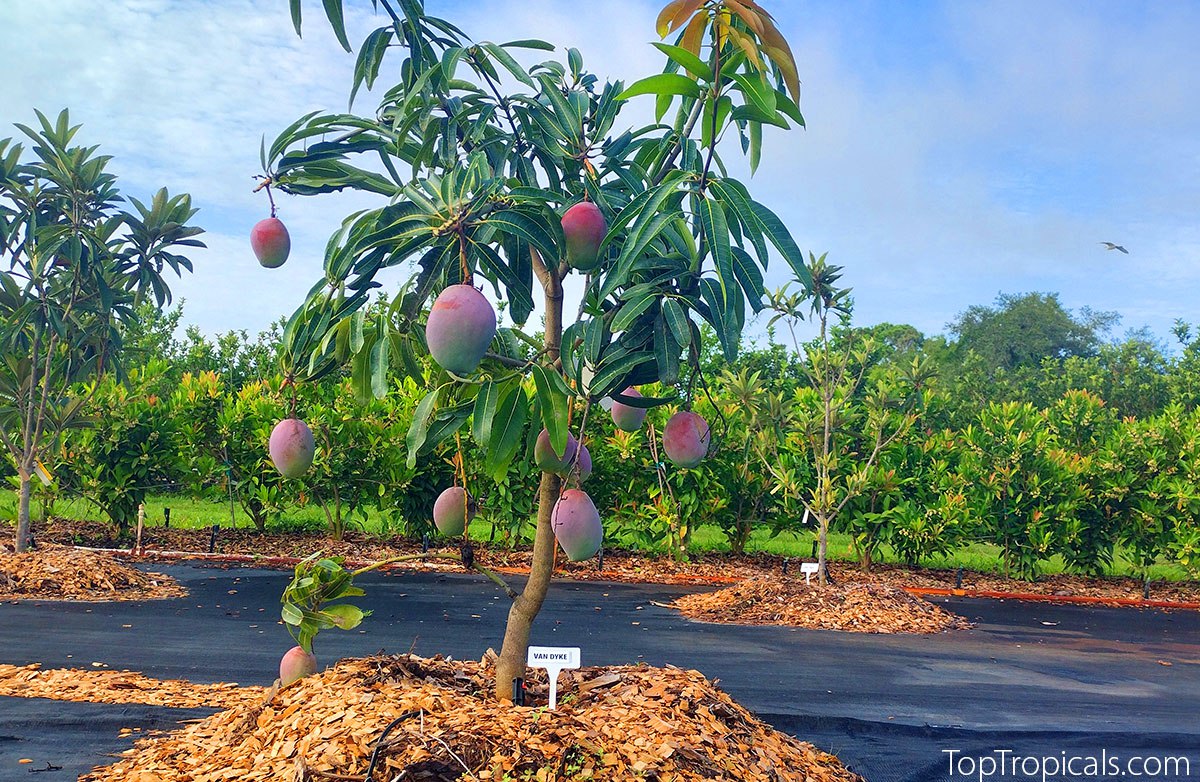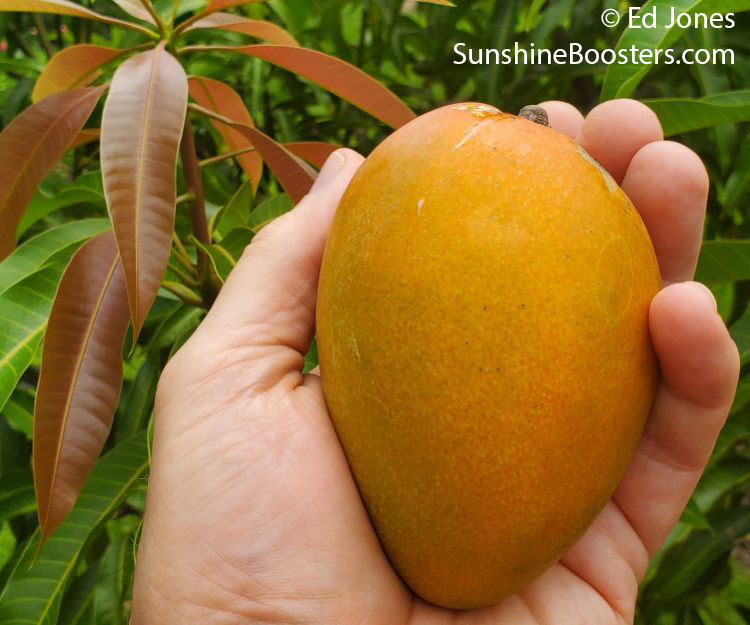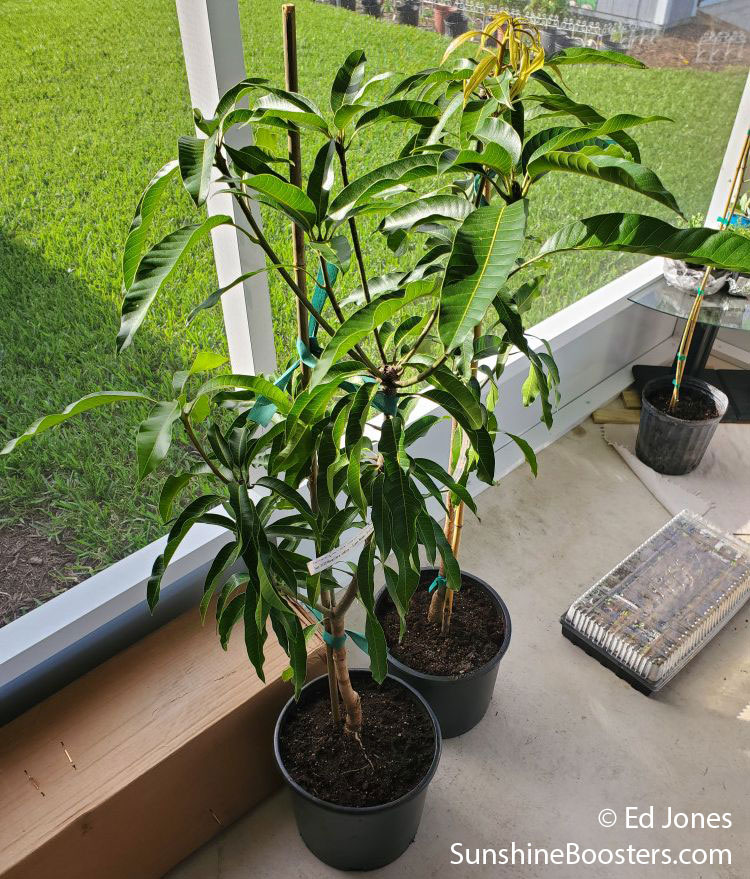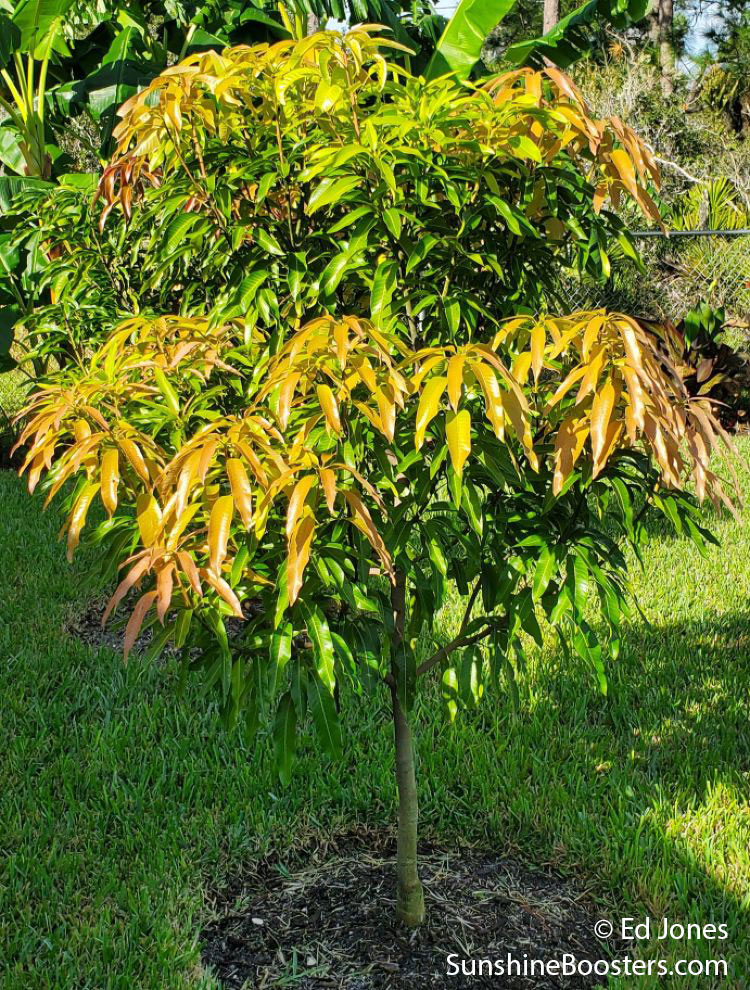Garden Blog - Top Tropicals
Date:
Top 5 favorite Mango varieties
and Top 10 Condo Mango trees
How to chose the right variety of a Mango tree?
Q: The most Frequently Asked Question about fruit trees: What is your favorite Mango variety? Which mango varieties are the best? Help me to make a choice!
A: As we mentioned on our Introduction to Mango Varieties page, there are thousands of named mango cultivars available. Similar to the classification of avocados (see our Avocado Variety Guide), mango trees can be selected based on your specific needs. These needs can include tree size and growth habit, disease resistance and hardiness, and most importantly, fruit characteristics such as taste, texture, size, color, storage ability, juice and sugar content.
We are currently working on a comprehensive Mango Variety Guide and will be sharing it
with you soon. In the meantime, below are a few tips on selecting the right mango tree.
NOTE: all of the Mango varieties we offer are FIBERLESS!
Top 5 Favorite Mango we just love!
1. Alphonso - the best Indian cultivar in terms of sweetness and
flavor. One of the rarest varieties and sought after - sweet large juice fruit. Coconut-like flavor.
2. Maha Chinook - Many
consider it the best mango had ever tasted. Very rare mango variety from Singapore. This variety is semi-dwarf and great for pot culture. Nam Doc Mai close relative.
3.
Fralan - Super reliable producer and hardy tree. Green fruit, sweet and
juicy. Fralan means "Thunder" - as the fruit cracks when peeled.
4. Fruit Cocktail -
Flavor is an amazing palette of different fruit, with citrus, pineapple, and guava notes.
5. Nam Doc Mai - It's not just us, everyone loves this Mango!
The most popular variety: semi-dwarf and great for pot culture. Eaten green or ripe, a Thailand favorite. It is hands down the most sought after of the Asian mangoes and for good
reason.
Top 10 Dwarf "Condo" Mango
1.
Mallika - condo mango native to India. Among the best of the new generation of Indian dessert mangos. Intensely sweet, rich and highly aromatic flavor with hints of citrus and melon.
2. Ice Cream - far and away the most popular of the "condo mangoes." Flavored like the name. The tree can easily be maintained at a height of just six feet (!) making it ideal for container growing.
3. Julie - the most popular variety in Jamaica and many other Caribbean islands because of
its rich, sweet, coconut/pineapple-like flavor. It is a dwarf cultivar, great for containers, but keep in mind it's very cold sensitive, don't plant it in the ground if you get freeze in winter.
4. Okrung - Thai compact cultivar,
fruit eaten while green. The fruit is traditionally served in Thailand in combination with sticky rice. One of the most popular varieties in Thailand. The fruit is very sweet, with the highest sugar content.
5. Pickering - great for pot culture. It has a bushy, compact growth habit, and can be maintained in a container at just six feet (!). The fruit has a firm
flesh with a fantastic coconut/mango flavor.
6. Nam Doc Mai - The most popular variety for pot culture, we already mentioned in our favorites above.
7. Cogshall - an ultra compact grower. Suitable for container growing on a balcony, or planting in a suburban backyard. It can easily be maintained at just eight feet tall, and it will still produce a good size crop year after year. The fruit is very colorful and has a mild, sweet flavor. It is also fungus resistant.
8. Carrie - the flavor
is by far the most outstanding. It has absolutely no fiber and extremely rich in flavor, sweet, aromatic and a pure pleasure to eat. You will savor every mouthful! Its compact size makes it an excellent dooryard tree.
9. Diamond - It has a great taste very similar to Nam Doc Mai. Very compact, of a dwarf habit, great as condo mango.
10. Keitt - the best all-around late mango. It is very productive, good-flavored, and disease resistant. It also has a very long and late season. The compact tree is semi dwarf that bears 4-5 pound goliath fruit!
Photo above: Pim Seng Mun mango tree is a reliable and heavy producer.
Top 5 recommended vigorous growers and reliable producers
1. Glenn - Excellent eating quality, consistent production, and effortless to grow.
2. Pim Seng Mun - extremely productive mango.
3. Sweet Tart - New patented variety - exclusive offer.
4. Fruit Punch - Multi fruit flavor, delicious!
5. Orange
Sherbet - One of the best new varieties for backyard growing. Flavor is sweet citrus-orange and less lemony than Lemon Meringue mango. The tree is moderately vigorous.
Top 5 exotic varieties for rare fruit collection
Now that you have decided to collect them all but have limited space, these are the top 5 of the most interesting rare cultivars:
1. Kar Lon Long -
rare and unusual, native to India. Fruits that can weigh up to 5 lbs each! The unique flavor that has been described as being a cross between a mango and a pineapple.
2. Mun Kun Si - similar to Nam Doc Mai but much bigger. Rare variety, very popular
among Thai and Vietnamese people. The fruit are extremely sweet, fiberless and somewhat crunchy ("Mun" means crunchy). Very late producer, fruit may still be on a tree as late as January.
3. Pina Colada - very sweet, has rich flavor with a hint of coconut and pineapple.
4. Ugly Betty - awesome mango, great sweet flavor, while the fruit is real ugly! Slightly mis-shaped at the top - hence the name.
5. Giselle - from Zill's breeding program and was a seedling of a mango called Tower. It was described as a juice mango and is named after Gary's wife.
Photo above: preparing mango seeds for planting - growing seedlings for future grafting.
Top 10 Dwarf Condo Mango - great for container culture
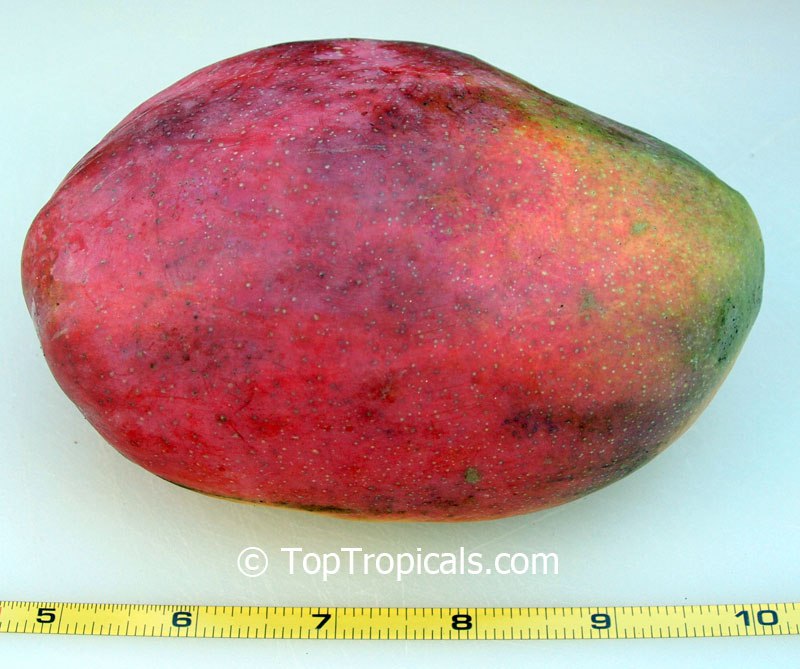
Mango Cogshall
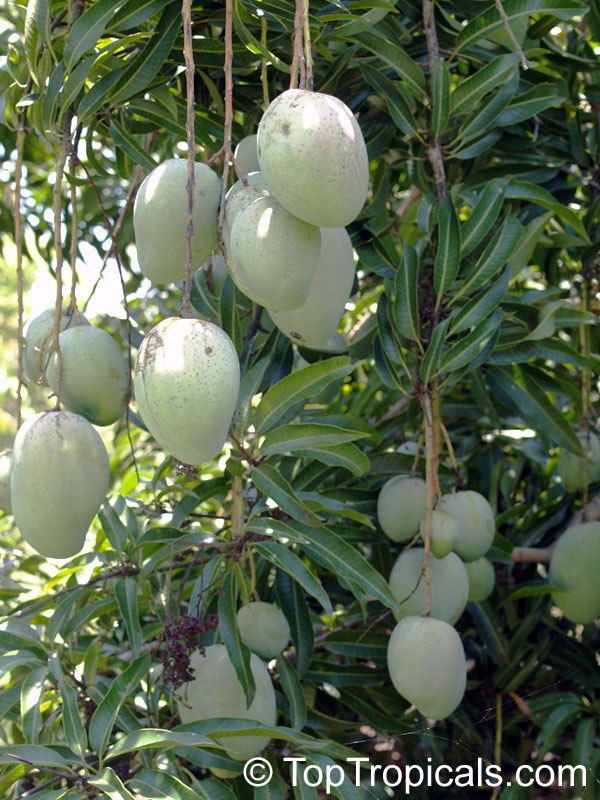
Mango Ice Cream
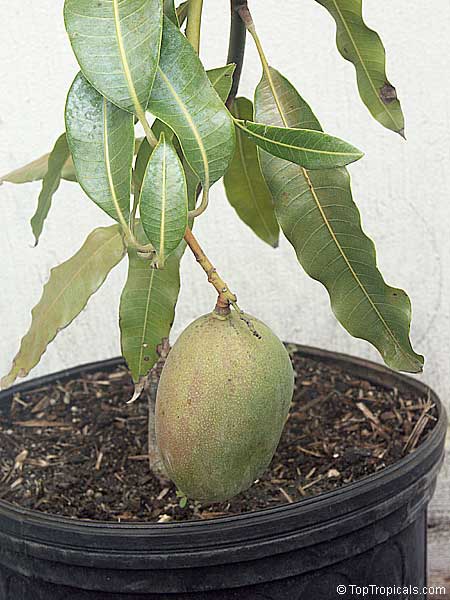
Mango Julie
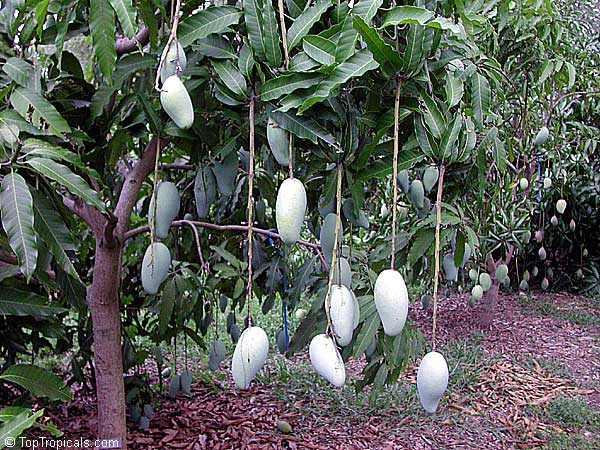
Mango Okrung
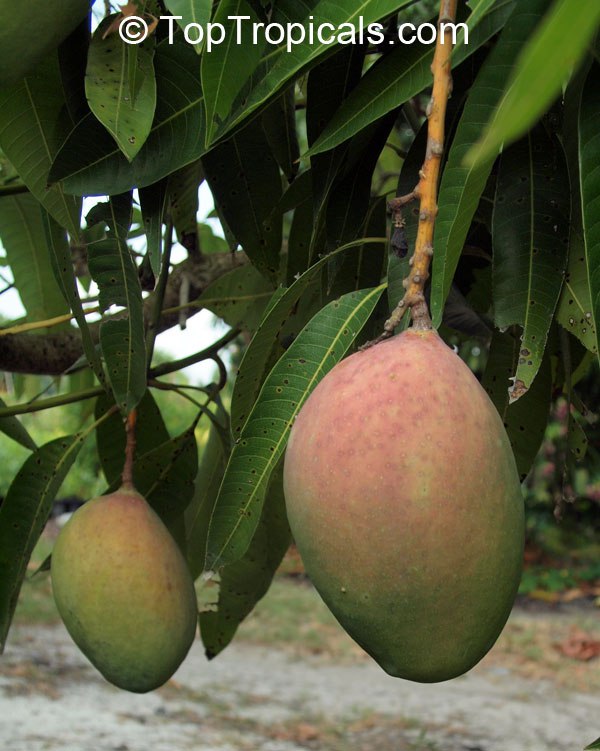
Mango Pickering
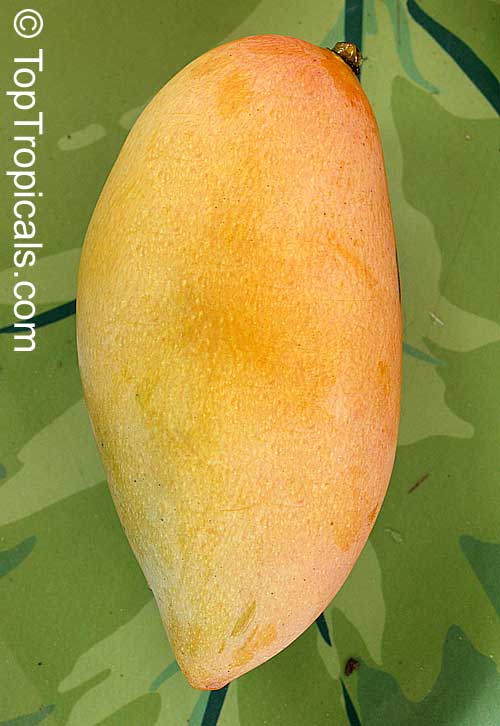
Mango Nam Doc Mai
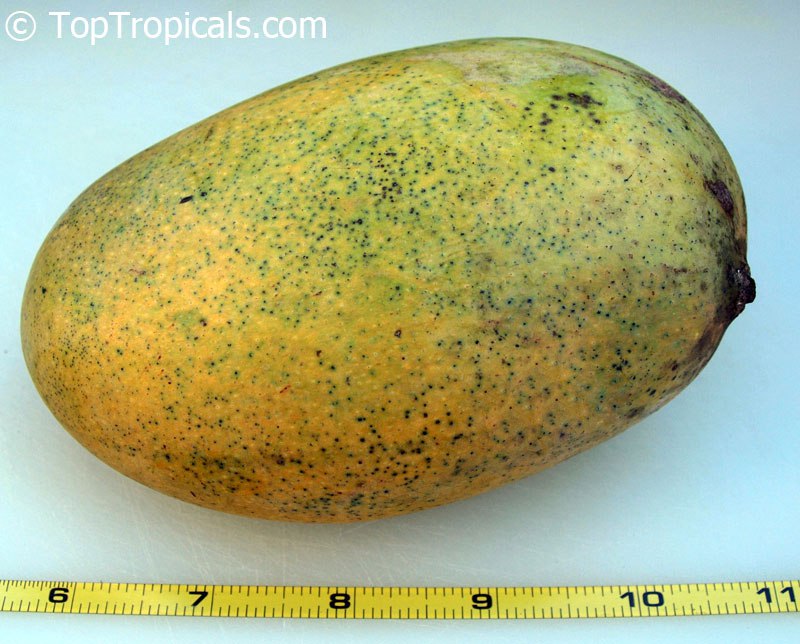
Mango Mallika
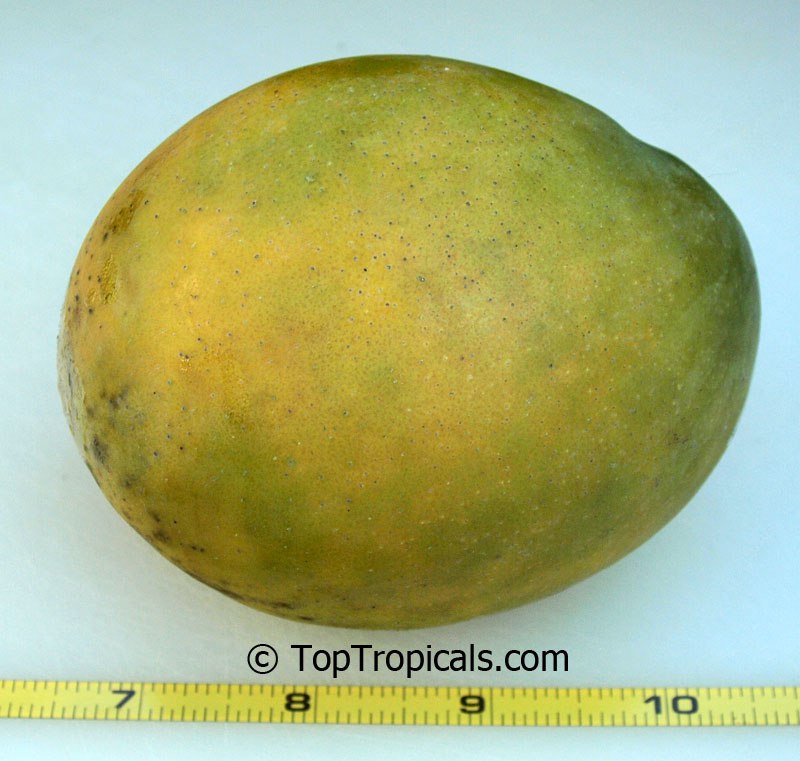
Mango Carrie
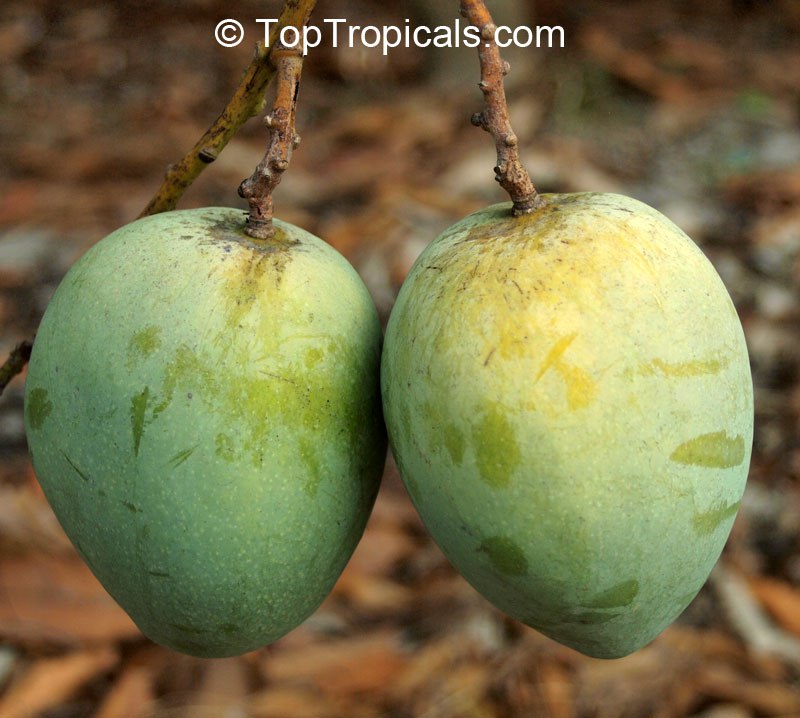
Mango Diamond
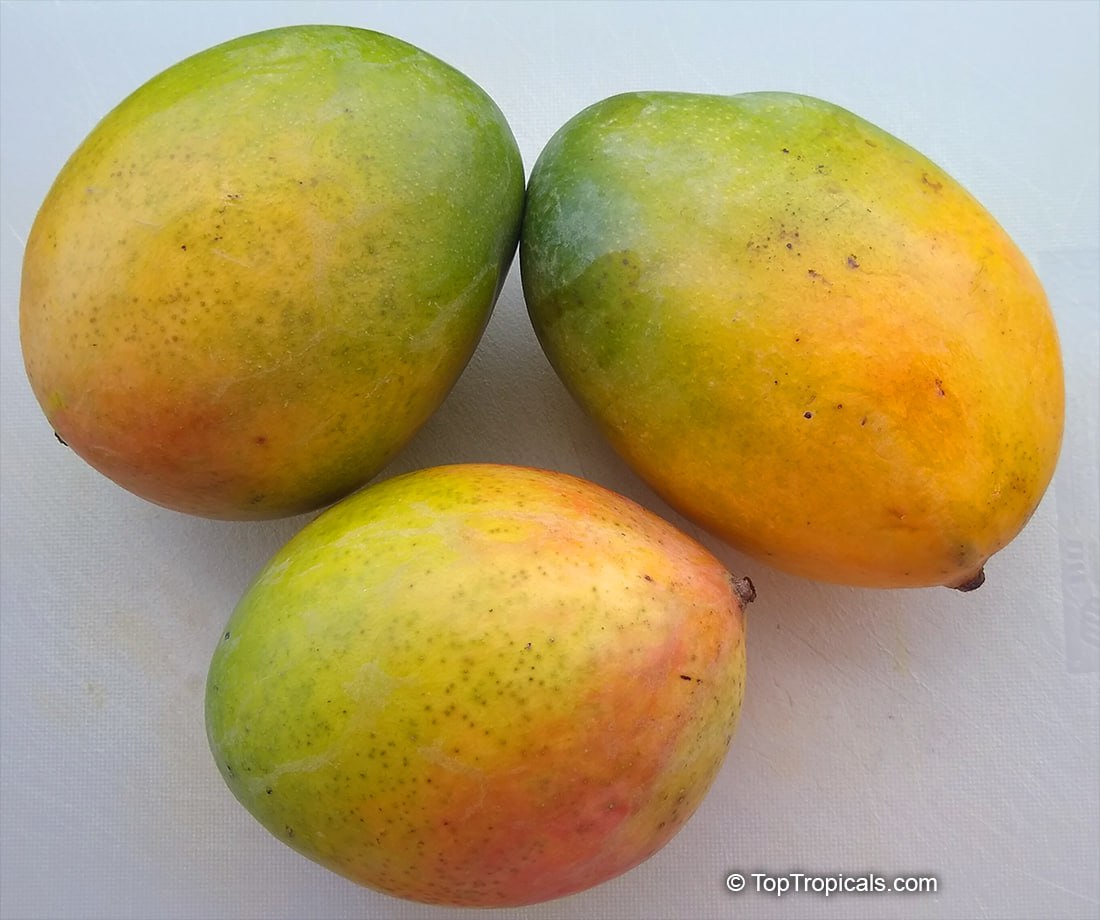
Mango Keitt
- 🟠 1. Cogshall - an ultra compact grower up to just eight feet tall, will still produce a good size crop. Very colorful and has a mild, sweet flavor. Fungus resistant.
- 🟠 2. Ice Cream - far and away the most popular of the "condo mangoes." Flavored like the name. Maintained at a height of just six feet (!) making it ideal for container growing.
- 🟠 3. Julie - the most popular variety in Jamaica and many other Caribbean islands because of its rich, sweet, coconut/pineapple-like flavor. Great for containers, but keep in mind it's very cold sensitive, don't plant it in the ground if you get freeze in winter.
- 🟠 4. Okrung - Thai compact cultivar, served in Thailand in combination with sticky rice. One of the most popular varieties in Thailand. The fruit is very sweet, with the highest sugar content.
- 🟠 5. Pickering - great for pot culture. It has a bushy, compact growth habit, maintained in a container at just six feet (!). The fruit has a firm flesh with a fantastic coconut/mango flavor.
- 🟠 6. Nam Doc Mai - The most popular variety for pot culture. Everyone loves it. Eaten green or ripe, a Thailand favorite.
- 🟠 7. Mallika - condo mango native to India. Among the best of the new generation of Indian dessert mangos. Intensely sweet, rich and highly aromatic flavor with hints of citrus and melon.
- 🟠 8. Carrie - the flavor is by far the most outstanding. It has absolutely no fiber and extremely rich in flavor, sweet, aromatic and a pure pleasure to eat. You will savor every mouthful! Its compact size makes it an excellent dooryard tree.
- 🟠 9. Diamond - It has a great taste very similar to Nam Doc Mai. Very compact, of a dwarf habit, great condo mango.
- 🟠 10. Keitt - the best all-around late mango. Very productive, good-flavored, and disease resistant. Has a very long and late season. The compact tree is semi dwarf that bears 4-5 pound goliath fruit!
📝 See also earlier post: 5 most Favorite Mango Varieties
🛒 Shop Mango Trees
#Food_Forest
🏵 TopTropicals
Date:
10 secrets of growing a perfect Mango tree
Grow Your Own Food
How to grow a healthy and productive mango tree?
1. Right variety. Select a vigorous grower for
in-ground planting, or a condo mango cultivar for growing in container. More info on varieties.
2. Soil must be well-drained. If planted in the ground, plant on a
little elevation (see How to plant a tree)
3. Full sun is a must. The more sun, the more flower and fruit.
4. Water. Keep mango tree on a dry side, water young trees regularly
but let top of the soil dry before next watering. Mango trees don't like wet
feet.
5. Air circulation is important for mango tree to eliminate
diseases. Allow enough space from other trees and buildings.
6. Fungicide. Mango leaves are very susceptible do fungal issues,
especially in humid climates likу Florida. Spray fungicide (Copper or similar)
according to the label, once a month.
7. Fertilize year around with every watering with liquid fertilizer
Sunshine
Boosters Mango Tango. Apply Micro-elements once a month and use other good supplements.
8. Shape. Check out Video:
">Tipping your mango tree - to shape the most vigorous and productive
tree.
9. Protect from hard freeze. Mango tree doesn't take freezing
temperatures well. In subtropical areas Mango can be protected. Alternatively, it can successfully produce in
container, if moved indoors during cold weather.
10. Fruit. Mango tree produces thousands of little flowers, many of
them can set fruit. Do not let a small, young tree to keep more than 1-2
fruit, remove extra, to avoid exhaustion. Allow 2-3 years for the tree to
establish until it produces a full crop. Apply Sunshine Honey supplement to your tree for sweeter fruit.
Date:
Condo Mango
Q: I was curious about indoor fruiting mango trees. I live in upstate New York and was thinking about trying to grow an indoor tree for fruit. I have a small heated greenhouse. Is there a variety that can be grown from seed that would suit my purposes and if not what is the most economical way I could obtain a cutting or small grafted plant? I keep my greenhouse around 60F in the winter and have no supplemental lighting. Are there any varieties that may work in a sunroom or other well lit indoor location?
A:
There are many dwarf varieties of mango suitable for container culture. They
are called "condo mangoes".
The most popular condo varieties are: Carrie, Cogshall, Cushman, Fairchild,
Graham, Ice Cream, Julie
, Mallika, Nam Doc Mai,
Pickering. You may read more about them in our online
catalog. You may also look into variety
Lancetilla which is also a compact tree, and produces one of the biggest size
fruit, up to 5 pounds. If you want some rare variety that hardly anyone else has -
try Baptiste, an exotic Haitian dessert
mango.
Your greenhouse should work for the winter time. Mango trees can take
as low as mid 40s during winter and even lower as long as that cold is
occasional. If you keep the temperature around 60, this should work well for over
wintering. Just make sure to reduce watering to a minimum, because cool
temperatures, low light and wet soil - is a bad combination for tropical plants,
especially for mango trees which prefer to be kept on a dry side.
Many indoor gardeners have fruiting mango trees in their collection. However,
keep in mind that the most important requirement for a mango is full sun.
While you may over winter the plant for a few months in a low light conditions,
in order for it to flower and produce fruit it needs lots of light. If moving
the tree into full sun your yard during the summer is possible, this would
be the best solution.
We always recommend
SUNSHINE boosters for both over wintering tropical plants in colder
climates, and for indoor gardening. SUNSHINE applications will help your tree to
cope with cool temperatures and low light conditions. This will also
dramatically increase flowering and fruiting performance. Another important factor for
keeping your container plant healthy is quality of your potting soil. We
offer a special
professional mix that contains lots of good stuff: coconut fiber, peat moss, pine
bark, and perlite. Fertilizing potted plants
is also very important during the warm season, because this is the only way
for them to get nutrients (which in the ground can be reached by spreading
root system).
As far as seedlings vs. grafting - the only way to
have a nicely fruiting mango tree is to plant a grafted variety. Seedlings start
producing only after 8-15 years, and the quality of such fruit may be
questionable. Only grafted plants can guarantee the desired taste of a variety.
Besides, grafted mangoes start producing immediately - you may see fruit forming
on plants as small as 3 ft, in 3 gal containers. However, during the first
1-2 years you will need to remove extra fruit and leave only 1-2 fruit so the
plant doesn't get exhausted and has enough energy to establish strong root
system.
For fun stories about growing mango, check out our Radio
Show recording YO Tango Mango!
Date:
Condo (Dwarf)
Mango Practical Guide:
What varieties are good for container culture
or small yards
Q: "Our winters are too cold for a mango tree, but I'd like to grow one in a pot so I can bring it inside during cold nights. Which varieties do you recommend for container gardening? I've heard of Condo Mango - do you carry them?"
A: Yes, we always carry Condo Mango varieties: they are a fantastic choice for gardeners with limited space or in cooler climates. They grow well in containers and can be easily maintained through pruning. Whether you're growing them on a balcony, in a greenhouse, or in a backyard, Condo Mangos provide the perfect mix of beauty and practicality.
What Are Condo Mangos?
Condo Mangos, also known as dwarf mango trees, are perfect for small spaces. These trees can be grown in containers, making them ideal for balconies, greenhouses, or small suburban backyards. With proper care, they can be maintained at a manageable height of 6-10 feet through regular pruning. Some plant enthusiasts even manage growing Mango tree as an indoor plant!
The term Condo Mango
Condo Mango refers to mango varieties that thrive in containers and are small by nature, allowing them to be easily kept even smaller with selective pruning.
Size and Growth
Unlike traditional mango trees, Condo Mangos are compact. They naturally grow to around 6-10 feet, but with proper pruning, they can be kept small, making them an excellent choice for limited space.
Growing in Containers
- Condo Mango trees thrive in pots and containers.
- A 15-20 gallon pot is ideal to give the roots enough room to grow.
- Ensure your container has drainage holes to prevent root rot.
Planting Tips
- Plant Condo Mangos in full sun, where they'll get plenty of heat and
light.
- Use well-draining soil for optimal growth.
- Fertilizer regularly with quality plant food. Out best choice is Sunshine Mango Tango for edibles.
- Late Winter to early Spring is the best time to plant in containers,
before the rainy season starts.
- Mangoes grow well in USDA zones 9-10, but if you live in cooler climates,
you can grow them indoors or in a greenhouse, as long as you meet their heat
and light needs.
Pruning and Maintenance
- Prune Condo Mango trees once a year to keep them at the desired height
(6-10 feet), right after harvesting (late Summer to Fall)
- Trim the tips of the branches to maintain a compact shape and encourage
healthy growth.
- Regular pruning will help keep the tree manageable and ensure better
fruit production.
Learn more: Find out what are Top 10 Dwarf Condo Mango - great for container culture.
Date:
How to feed a Mango tree...
and to grow a Dwarf Mango
How to fertilize a Mango tree
Q: My mango trees that I bought and planted last august now have fruit. I bought 2 types of fertilizer from you and never used it. Should I use your fertilizer now?
A: It is a perfect time now to fertilize your plants as they
start active growth.
For mango trees, we recommend liquid fertilizer Sunshine Booster - Mango Tango. It is formulated for Mango trees,
especially for container grown. It improves quantity and quality of flowers and
ability to set fruit, reduces bud-flower-fruit drop. Can be used as often as
with every watering. For best results, use in combination with Sunshine Honey and Sunshine Superfood plant supplements. Its scientifically-balanced
stable formula is organic Amino-acid based and has NO EDTA chelators to eliminate
nutrients lockup; it does not affect crop taste.
Additionally, you may use slow-release granulated fertilizer Mango-Food once a month during hot season only. Dosage: 1 teaspoon per
each gal of soil.
Water-soluble fertilizers can be also used, however, those are usually
EDTA-chelated which is not as efficient as Amono-acid based Sunshine Boosters and
may create nutrients build up, especially if overdosed in containers.
For in-ground mango trees, you may use all the above, and slow-release
granulated fertilizer can be applied in larger quantities: spread a handful
around the drip line.
Remember that only liquid Sunshine Boosters can be applied year around. With other fertilizers, you need to be careful not to overdose, and apply only during hot weather (when night temperatures are steadily above 65F).
How to grow a Dwarf Mango tree
Q: I received the Ice cream mango tree in great condition (thank you for the ingenious packing job) on Wednesday and have planted it in a pot slightly bigger than the root ball. I plan to grow the tree on my front porch, so how big a container should I ultimately use when the tree outgrows this pot? How big a container does it need to fruit? I hope to keep it around 6-7 feet high, if possible. I live in Hawaii.
A: Ice Cream mango is a perfect variety for container culture, and it should be happy in Hawaii. You did everything right. Keep it in this small pot for now and wait until it starts vigorous growth in Summer. Once it starts growing (and you will notice roots growing too, sometimes they try to grow through the holes in the bottom of the pot), then it's time to step up into a bigger container (7-10 gal). Eventually you may use container size as large as 15 gal. Ice cream mango is slow growing and compact, and you will be able to maintain it under 7 ft with very minimal pruning if any.
Top 5 exotic Mango varieties for rare fruit collection
Now that you have decided to collect them all but have limited space, these are the top 5 of the most interesting rare Mango cultivars:
- 🟠 1. Kar Lon Long - rare and unusual, native to India. Fruits that can weigh up to 5 lbs each! The unique flavor that has been described as being a cross between a mango and a pineapple.
- 🟠 2. Mun Kun Si - similar to Nam Doc Mai but much bigger. Rare variety, very popular among Thai and Vietnamese people. The fruit are extremely sweet, fiberless and somewhat crunchy ("Mun" means crunchy). Very late producer, fruit may still be on a tree as late as January.
- 🟠 3. Pina Colada - very sweet, has rich flavor with a hint of coconut and pineapple.
- 🟠 4. Ugly Betty - awesome mango, great sweet flavor, while the fruit is real ugly! Slightly mis-shaped at the top - hence the name.
- 🟠 5. Giselle - from Gary Zill's breeding program and was a seedling of a mango called Tower. It was described as a juice mango and is named after Gary's wife.
❓What is your favorite Mango variety? Share in comments 👇
📝 See also earlier posts:
- 🔸 5 most Favorite Mango Varieties
- 🔸 Top 10 Dwarf "Condo" Mango
- 🔸 Top 5 vigorous growers and reliable producers
- 🔸 How to grow a mango tree
🛒 Shop Mango Trees
#Food_Forest
🏵 TopTropicals
What are the Condo Mangos?
- 🟠 What Are Condo Mangos?
- 🟠 The term “Condo Mango”
Condo Mangos, also known as dwarf mango trees, are perfect for small spaces. These trees can be grown in containers, making them ideal for balconies, greenhouses, or small suburban backyards. With proper care, they can be maintained at a manageable height of 6–10 feet through regular pruning. Some plant enthusiasts even manage growing Mango tree as an indoor plant!
“Condo Mango” refers to mango varieties that thrive in containers and are small by nature, allowing them to be easily kept even smaller with selective pruning.
- 🟠 Size and Growth
- 🟠 Growing in Containers
Unlike traditional mango trees, Condo Mangos are compact. They naturally grow to around 6-10 feet, but with proper pruning, they can be kept small, making them an excellent choice for limited space.
· Condo Mango trees thrive in pots and containers.
- · A 15-20 gallon pot is ideal to give the roots enough room to grow.
- · Ensure your container has drainage holes to prevent root rot.
- 🟠 Planting Tips
· Plant Condo Mangos in full sun, where they’ll get plenty of heat and light.
- · Use well-draining soil for optimal growth.
- · Fertilizer regularly with quality plant food. Out best choice is Sunshine Mango Tango for edibles.
- · Late Winter to early Spring is the best time to plant in containers, before the rainy season starts.
- · Mangoes grow well in USDA zones 9-10, but if you live in cooler climates, you can grow them indoors or in a greenhouse, as long as you meet their heat and light needs.
🟠 Pruning and Maintenance
- · Prune Condo Mango trees once a year to keep them at the desired height (6–10 feet), right after harvesting (late Summer to Fall)
- · Trim the tips of the branches to maintain a compact shape and encourage healthy growth.
- · Regular pruning will help keep the tree manageable and ensure better fruit production.
- 📝 See most popular Condo Mango varieties in the next post 👇
🛒 Shop Condo Mango
📝 Earlier posts on #Mango:
- 🔸 Mango rainbow: What's the taste of that mango variety?
- 🔸 5 most Favorite Mango Varieties
- 🔸 Top 10 Dwarf "Condo" Mango
- 🔸 Top 5 vigorous growers and reliable producers
- 🔸 Top 5 exotic Mango varieties for rare fruit collection
- 🔸 How to grow a mango tree
- 🔸 How to protect mango fruit from rodents
#Food_Forest #Mango
🔴 Join 👉 TopTropicals
How to take care of a mango tree in winter
❄️ Watering
❄️ Fertilizing
❄️ Temperature Protection
❄️ Sunlight
❄️ Check for Pests
During winter, mango trees need minimal watering. Overwatering can cause root rot, especially when temperatures are low. Water the tree only when the soil feels dry about 2 inches deep.
Avoid feeding in the winter with dry fertilizer. It may cause root burn, plus encourages new growth that is more susceptible to cold damage. Wait until spring when the weather warms up to resume heavy feeding your tree. You can continue using Sunshine Boosters natural liquid fertilizers - Sunshine Mango Tango: it is safe to apply year around since its intake is regulated by reduced water, and only the necessary amount of essential elements will be delivered.
Mango trees are sensitive to cold. If you live in a region with freezing temperatures, move your mango tree indoors or to a sheltered location like a garage with a bright light source. If it's in a small container, consider bringing it inside for the winter.
Ensure the tree gets as much sunlight as possible. If indoors, place it near a South-facing window where it can soak up the sun during the day.
Winter can bring pests indoors. Regularly inspect the tree for any signs of insect problems around the leaves and stems.
By following these guidelines, your mango tree will be healthier and better prepared for the next growing season.
📚 Learn more: Mango trees and how to deal with cold weather.
🛒 Shop Mango varieties
📝 Earlier posts on #Mango:
- 🔸 What are the Condo Mangos? A Practical Guide
- 🔸 Mango rainbow: What's the taste of that mango variety?
- 🔸 5 most Favorite Mango Varieties
- 🔸 Top 10 Dwarf "Condo" Mango
- 🔸 Top 5 vigorous growers and reliable producers
- 🔸 Top 5 exotic Mango varieties for rare fruit collection
- 🔸 How to grow a mango tree
- 🔸 How to protect mango fruit from rodents
#Food_Forest #Mango
🔴 Join 👉 TopTropicals
Date:
Healthy Plants: Q&A from Mr Booster - Mango Talk
Today we are introducing a new column - Mango Talk! Everybody loves Mango
- the most delicious fruit in the world. Fruit experts like to talk about
varieties, how to grow a Mango tree better, and the fruit bigger and sweeter.
And beginners want to know more! What variety to get? How to take care of it?
How to get more fruit sooner than later?
This easy-read blog from Ed Jones is about the first steps - what to do
when you get your first Mango tree...
In our future publications, you will hear from Mango experts and have a
tour on Mango varieties...
Fertilize your Mango trees
By Ed Jones, the Booster Guy
Ok, you finally did it. You bought your first mango tree. Now what? Well, you have to love it and feed it and trim it and love it some more. But today, lets talk about how to fertilize your mango tree. The photo above shows some very small grafted mango trees. This is probably how yours will look when you bring them home or have them delivered....
CONTINUE READING >>
The photo above is of the two trees at the beginning of this blog after just under 10 months of TLC.
